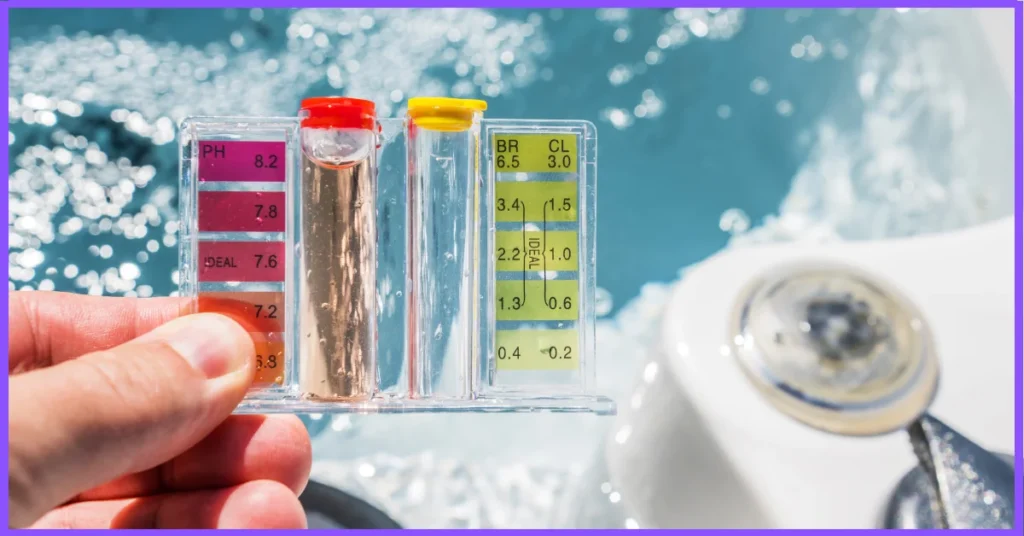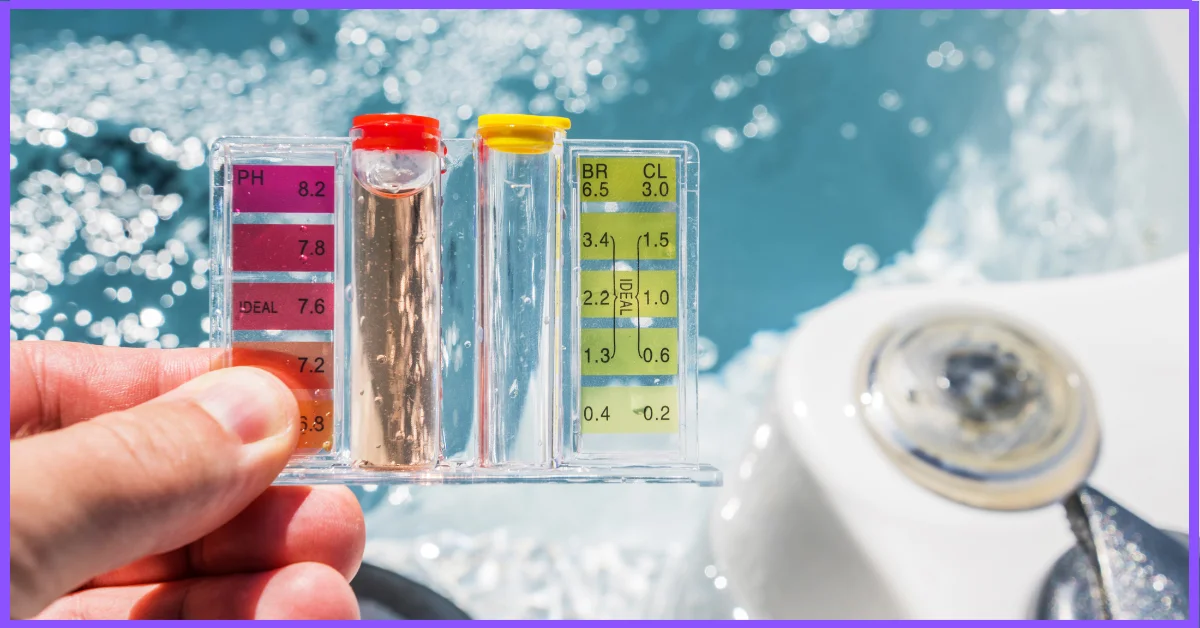
Hot Tub pH Problems? We’ve Got You Covered: A Comprehensive Guide to Maintaining Water Balance
The warm, bubbling embrace of a hot tub is a luxury many of us cherish. It’s a place to unwind, soothe aching muscles, and socialize with friends and family. But the idyllic experience can quickly sour if the water isn’t properly maintained. One of the most common culprits behind a less-than-perfect hot tub experience? pH imbalances. This comprehensive guide will delve into the intricacies of hot tub pH, explaining what it is, why it matters, and, most importantly, how to address pH problems to ensure your hot tub remains a sanctuary of relaxation.
The term “pH” stands for “potential of hydrogen.” In the context of hot tubs, it measures the acidity or alkalinity of the water. The pH scale ranges from 0 to 14, with 7 being neutral. Values below 7 indicate acidity, while values above 7 indicate alkalinity. Maintaining the correct pH level is crucial for several reasons, directly impacting water quality, bather comfort, and the lifespan of your hot tub equipment.
Why is Hot Tub pH Important?
Understanding the importance of pH in your hot tub is the first step toward effective maintenance. Here’s a breakdown of the key reasons why pH levels demand your attention:
- Bather Comfort: Water with an imbalanced pH can cause skin and eye irritation. High pH levels can lead to dry, itchy skin, while low pH levels can cause stinging eyes and a burning sensation.
- Sanitizer Efficiency: The effectiveness of your sanitizer, whether it’s chlorine, bromine, or another alternative, is significantly affected by pH. When pH is out of balance, the sanitizer’s ability to kill bacteria and other contaminants is greatly diminished. This can lead to cloudy water and potential health hazards.
- Equipment Protection: Corrosive water (low pH) can damage the hot tub’s components, including the pump, heater, and jets. Conversely, high pH can lead to scale buildup, which can clog pipes and reduce the efficiency of your equipment.
- Water Clarity: Proper pH helps maintain crystal-clear water. Imbalances can lead to cloudy water, making your hot tub less inviting.
In essence, maintaining the right pH is the cornerstone of a healthy and enjoyable hot tub experience. Ignoring pH problems can lead to a cascade of issues, from uncomfortable bathing to costly repairs.
The Ideal pH Range for Hot Tubs
The ideal pH range for a hot tub is generally considered to be between 7.2 and 7.8. This range is a sweet spot that balances bather comfort, sanitizer effectiveness, and equipment protection. Many hot tub owners find that maintaining a pH of around 7.4 to 7.6 is optimal.
Regular testing is essential to ensure your hot tub water stays within this range. You can use test strips or a liquid test kit to measure the pH levels. Test strips are convenient and easy to use, while liquid test kits often provide more accurate results. Test your hot tub water at least twice a week, or more frequently if you use your hot tub often.
Common Hot Tub pH Problems and Solutions
Let’s explore the specific problems you might encounter with your hot tub’s pH and the corresponding solutions. Remember that patience and consistent maintenance are key to achieving and maintaining the perfect water balance.
High pH in Your Hot Tub
High pH, typically above 7.8, can lead to:
- Cloudy water
- Reduced sanitizer effectiveness
- Scale buildup on equipment
- Skin and eye irritation
Solutions for High pH:
- Add pH decreaser: This is a chemical designed to lower the pH level. Follow the manufacturer’s instructions carefully, adding the recommended amount and allowing the water to circulate for a few hours before retesting.
- Aeration: In some cases, simply aerating the water can help lower the pH. This can be done by running the jets or using an air blower.
- Partial drain and refill: If the pH is significantly high, a partial drain and refill can help dilute the water and bring the pH down.
Low pH in Your Hot Tub
Low pH, typically below 7.2, can lead to:
- Corrosion of equipment
- Skin and eye irritation
- Rapid sanitizer consumption
Solutions for Low pH:
- Add pH increaser: This is a chemical designed to raise the pH level. Follow the manufacturer’s instructions carefully, adding the recommended amount and allowing the water to circulate for a few hours before retesting.
- Add alkalinity increaser: Sometimes, low pH is caused by low total alkalinity. Adding an alkalinity increaser can help stabilize the pH.
- Partial drain and refill: Similar to high pH, a partial drain and refill can help dilute the water and bring the pH up.
The Role of Total Alkalinity
Total alkalinity (TA) is a crucial factor in maintaining stable pH levels. TA measures the water’s ability to resist changes in pH. Think of it as a buffer that prevents the pH from fluctuating wildly. The ideal range for TA in a hot tub is generally between 80 and 120 ppm (parts per million).
If your TA is too low, the pH will be unstable and prone to dropping. If your TA is too high, the pH will tend to rise. Therefore, maintaining the correct TA is essential for controlling your hot tub’s pH.
To adjust your total alkalinity, you can use alkalinity increaser to raise it or pH decreaser to lower it. Always test and adjust TA *before* adjusting pH.
Step-by-Step Guide to Balancing Hot Tub Water Chemistry
Here’s a practical, step-by-step guide to help you balance your hot tub water and resolve those pesky pH problems. This process should be a regular part of your hot tub maintenance routine.
- Test the water: Use a test strip or liquid test kit to measure both pH and total alkalinity.
- Adjust total alkalinity (if necessary): If your TA is outside the ideal range of 80-120 ppm, adjust it first. Add alkalinity increaser to raise it or pH decreaser to lower it. Allow the water to circulate for a few hours after adding the chemical, then retest.
- Adjust pH (if necessary): Once your TA is balanced, adjust your pH. Add pH increaser to raise it or pH decreaser to lower it. Allow the water to circulate for a few hours after adding the chemical, then retest.
- Sanitize the water: Add your chosen sanitizer (chlorine, bromine, etc.) according to the manufacturer’s instructions.
- Repeat as needed: Continue testing and adjusting your water chemistry regularly to maintain the proper balance.
Troubleshooting Common Hot Tub pH Issues
Even with diligent maintenance, you might encounter some persistent pH issues. Here’s how to troubleshoot some common problems:
- Cloudy water: This can be caused by high pH, low sanitizer levels, or other contaminants. Test your pH and sanitizer levels. Shock the hot tub with a non-chlorine shock treatment if necessary.
- Scale buildup: High pH is a common cause of scale. Lower the pH and consider using a scale inhibitor.
- Corrosion: Low pH can corrode equipment. Raise the pH and inspect your equipment for damage.
- Foaming: Foaming can be caused by high pH, body oils, and other contaminants. Test your pH and add an anti-foam agent if necessary.
Tips for Preventing Hot Tub pH Problems
Prevention is always the best medicine, and this holds true for hot tub pH problems. Here are some tips to help you maintain a healthy pH balance and avoid issues in the first place:
- Test your water regularly: As mentioned previously, regular testing is the cornerstone of good hot tub maintenance.
- Use quality chemicals: Invest in reputable hot tub chemicals and follow the manufacturer’s instructions.
- Rinse off before entering: Encourage bathers to shower before entering the hot tub to remove body oils, lotions, and other contaminants that can affect water chemistry.
- Maintain proper sanitation: Ensure your sanitizer levels are adequate to kill bacteria and other contaminants.
- Shock your hot tub regularly: Shocking the hot tub with a non-chlorine shock treatment can help remove organic contaminants and maintain water clarity.
- Follow the manufacturer’s instructions: Consult your hot tub’s manual for specific recommendations on water chemistry and maintenance.
By following these tips, you can minimize the risk of hot tub pH problems and enjoy a consistently clean and relaxing hot tub experience.
The Bottom Line: Enjoying a Perfectly Balanced Hot Tub
Maintaining the correct pH level is a fundamental aspect of hot tub ownership. By understanding the importance of pH, regularly testing your water, and addressing any imbalances promptly, you can ensure your hot tub water is safe, comfortable, and inviting. Don’t let hot tub pH problems ruin your relaxation time. With a little effort and attention, you can keep your hot tub water perfectly balanced and enjoy the benefits of your personal oasis. Remember, staying on top of your hot tub pH is an investment in both the longevity of your equipment and your overall well-being.
This guide provides a comprehensive overview of hot tub pH problems and solutions. If you encounter persistent issues or have any doubts, consult a qualified hot tub professional for assistance.
[See also: Related Article Titles]


